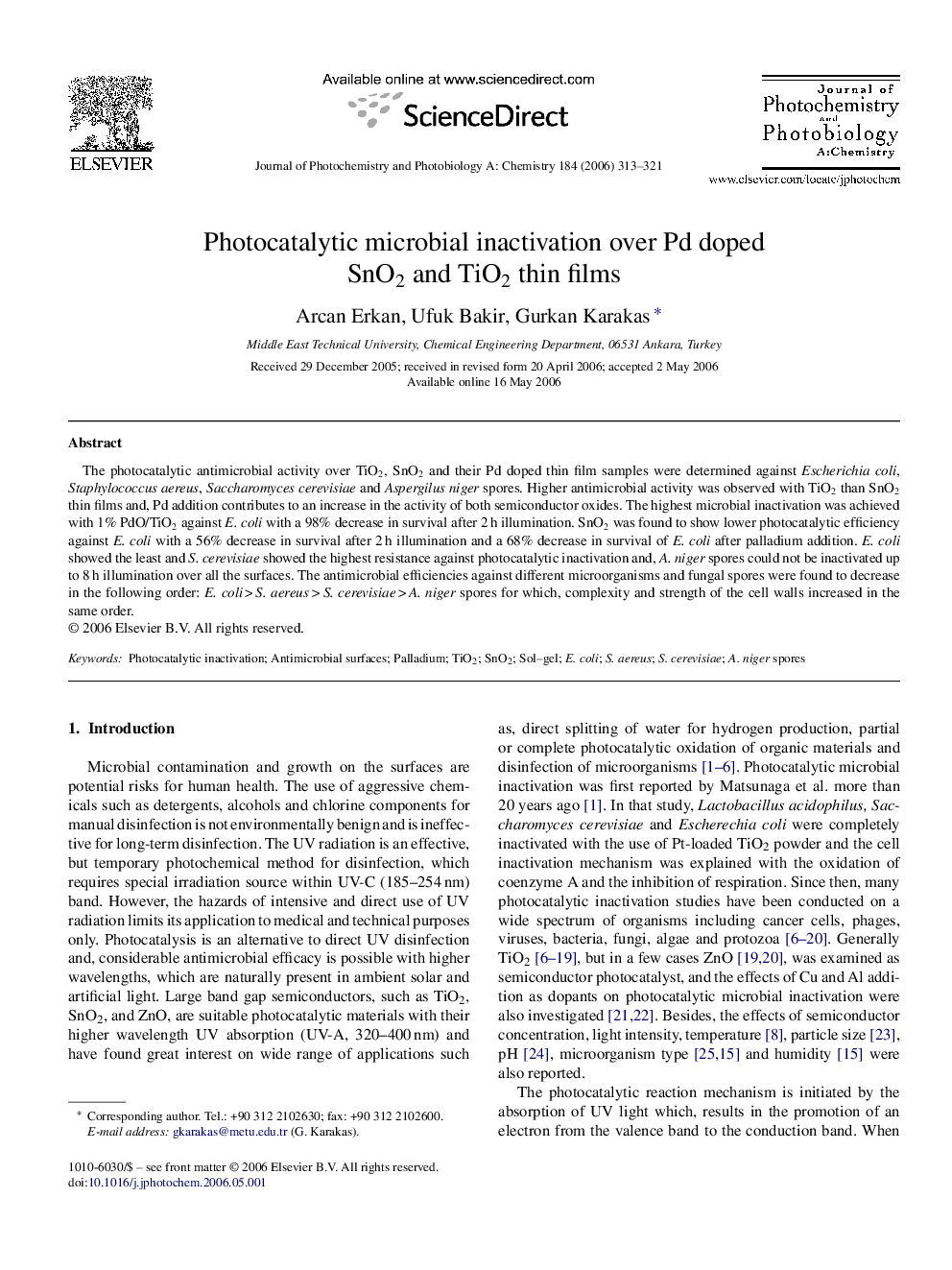| Article ID | Journal | Published Year | Pages | File Type |
|---|---|---|---|---|
| 28472 | Journal of Photochemistry and Photobiology A: Chemistry | 2006 | 9 Pages |
The photocatalytic antimicrobial activity over TiO2, SnO2 and their Pd doped thin film samples were determined against Escherichia coli, Staphylococcus aereus, Saccharomyces cerevisiae and Aspergilus niger spores. Higher antimicrobial activity was observed with TiO2 than SnO2 thin films and, Pd addition contributes to an increase in the activity of both semiconductor oxides. The highest microbial inactivation was achieved with 1% PdO/TiO2 against E. coli with a 98% decrease in survival after 2 h illumination. SnO2 was found to show lower photocatalytic efficiency against E. coli with a 56% decrease in survival after 2 h illumination and a 68% decrease in survival of E. coli after palladium addition. E. coli showed the least and S. cerevisiae showed the highest resistance against photocatalytic inactivation and, A. niger spores could not be inactivated up to 8 h illumination over all the surfaces. The antimicrobial efficiencies against different microorganisms and fungal spores were found to decrease in the following order: E. coli > S. aereus > S. cerevisiae > A. niger spores for which, complexity and strength of the cell walls increased in the same order.
